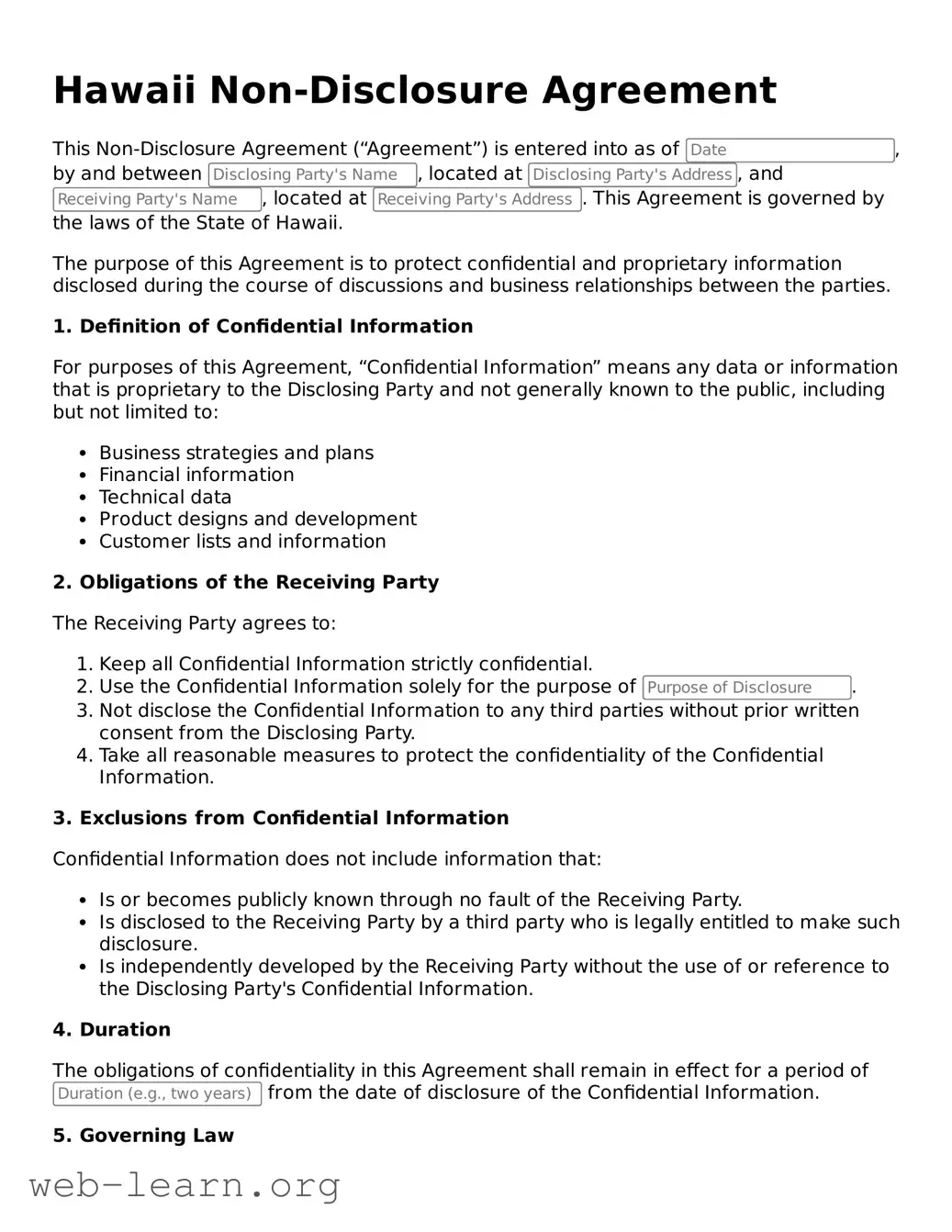Attorney-Approved Non-disclosure Agreement Document for the State of Hawaii
A Hawaii Non-disclosure Agreement (NDA) is a legal document designed to protect confidential information shared between parties. This agreement ensures that sensitive data, trade secrets, or proprietary information remains undisclosed to third parties. In a state known for its unique business environment, understanding the nuances of this form is essential for protecting valuable assets.
